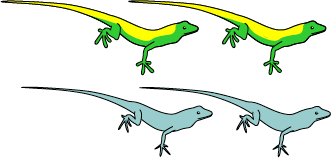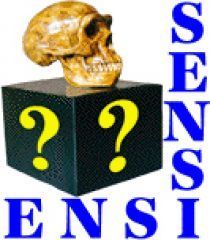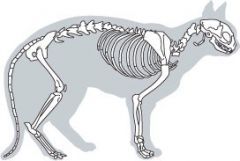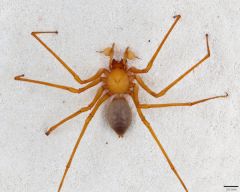Search by:
To search for teaching materials that address particular concepts in our conceptual framework, visit the teaching guide for your grade level:
K-2, 3-5 , 6-8, 9-12, or College
Found 14 resources:
Anolis Lizards
Grade Level(s):
- 9-12
Source:
- Collins, Jennifer
Resource type:
- lab activity
Discipline:
- Life Science
Time: Two class periods
Overview
Students "travel" to the Greater Antilles to figure out how the Anolis lizards might have evolved there. Students make observations, ask questions, share data, form hypotheses, generate expectations, get more data, interpret them, and test their ideas.
Amazon fly
Grade Level(s):
- 6-8
- 9-12
- College
Source:
- UC Museum of Paleontology
Resource type:
- lab activity
Discipline:
- Life Science
Time: 10-15 minutes
Overview
This short activity quickly engages the participants in the process of developing testable hypotheses. Students come up with multiple hypotheses to explain a set of observations and figure out how to test these hypotheses.
Dino-Data
Grade Level(s):
- 6-8
Source:
- UC Museum of Paleontology
Resource type:
- classroom activity
Discipline:
- Earth science
- Life Science
Time: 3-4 class periods
Overview
Students examine data about dinosaurs and hypothesize about what the data can tell them. Students modify their hypotheses as more information is revealed and review what they have learned about how science works.
Designing your very own science experiment
Grade Level(s):
- 9-12
Source:
- Stefanski, Mark
Resource type:
- lab activity
Discipline:
- Life Science
Time: 2-4 class periods
Overview
Students design and carry out an experiment using pill bugs (isopods). Other organisms could be used in place of the pill bugs. Students reflect on the process used by charting their pathway on the Science Flowchart.
Heating and cooling of the Earth’s surface
Grade Level(s):
- 6-8
Source:
- UC Museum of Paleontology
Resource type:
- lab activity
Discipline:
- Physical Sciences
Time: Two class periods
Overview
Students conduct experiments on the rate that sand and water heat up and cool down. Based on their observations, they make hypotheses about why materials heat up and cool down at different rates and then test their ideas.
Investigating a Crime Scene
Grade Level(s):
- 6-8
- 9-12
Source:
- UC Museum of Paleontology
Resource type:
Discipline:
- General
Time: 30 minutes
Overview
Two suspicious dogs and a shredded book provide a perfect combination for focusing on the process of science and to do so with a bit of a chuckle. This powerpoint has been developed so that you can ask for student responses throughout.
Introducing the Understanding Science Flowchart to middle school students
Grade Level(s):
- 6-8
Source:
- UC Museum of Paleontology
Resource type:
- classroom activity
Discipline:
- Earth science
Time: 1-2 class periods
Overview
Students read a story about Walter Alvarez and then plot his scientific journey on the Understanding Science Flowchart. Students find that science is seldom a linear story.
Introducing the Understanding Science flowchart
Grade Level(s):
- 9-12
- College
Source:
- UC Museum of Paleontology
Resource type:
- classroom activity
Discipline:
- Earth science
Time: 90 minutes
Overview
Students participate in a quick activity and discuss whether they were doing science. They then read a story about Walter Alvarez, discuss the process of science, and trace his scientific journey using the Science Flowchart.
Mystery tubes
Grade Level(s):
- 6-8
- 9-12
- College
Source:
- ENSI
Resource type:
- classroom activity
Discipline:
- General
Time: One class period
Overview
Students are asked to determine what the interior construction of the mystery tube looks like. Working in groups, students pose explanations for what they are observing and test their ideas.
Xenosmilus
Grade Level(s):
- 3-5
- 6-8
- 9-12
Source:
- UC Museum of Paleontology
Resource type:
- classroom activity
Discipline:
- Life Science
Time: One class period
Overview
In this lesson, students play the roles of paleontologists on a dig. They "unearth" a few fossils at a time and attempt to reconstruct the animal the fossils represent.
The Hobbit: When scientists disagree about the evidence
Grade Level(s):
- 9-12
- College
Source:
- Visionlearning
Resource type:
- classroom activity
Discipline:
- Life Science
Time: One class period
Overview
This classroom activity, adapted from an exercise on PBS's NOVA website, provides an excellent example of an active debate within the scientific community regarding a relatively recent human fossil find, Homo floresiensis.
The checks lab
Grade Level(s):
- 9-12
Source:
- ENSI
Resource type:
- classroom activity
Discipline:
- General
Time: One class period
Overview
Students construct plausible scenarios to explain a series of canceled bank checks. They revise their original hypotheses with new evidence and learn how human values and biases influence observation and interpretation.
Endosymbiosis: Cells within cells
Grade Level(s):
- 9-12
- College
Source:
- UC Museum of Paleontology
Resource type:
- Science Story
Discipline:
- Life Science
Time: one period
Overview
This Science Story on endosymbiosis explores the career of microbiologist Lynn Margulis and how an unlikely idea overcame strong resistance within the scientific community and finally came to be an accepted part of evolutionary theory. Get tips for using science stories in class.
How science works
Grade Level(s):
- 6-8
- 9-12
- College
Source:
- California Academy of Sciences
Resource type:
- Science Story
- video
Discipline:
- Life Science
Time: 10 minutes
Overview
This Science in Action video uses the Understanding Science Flowchart to follow arachnologist Charles Griswold and colleagues as they describe the process involved in an exciting new spider discovery.







